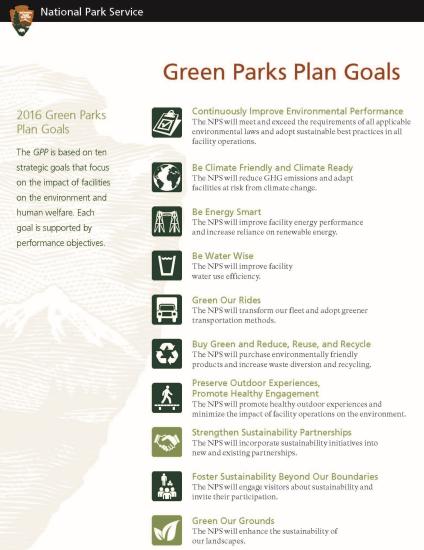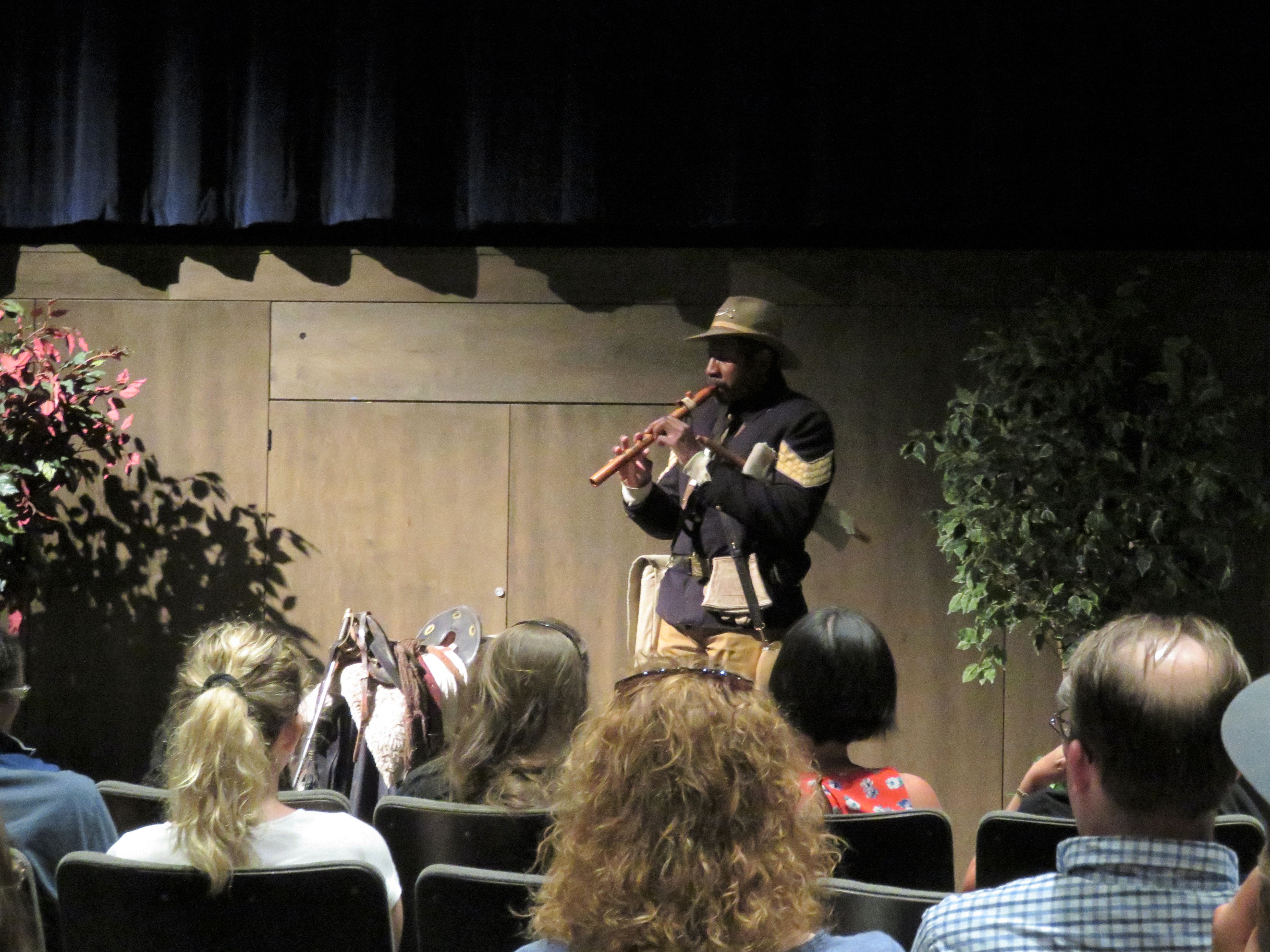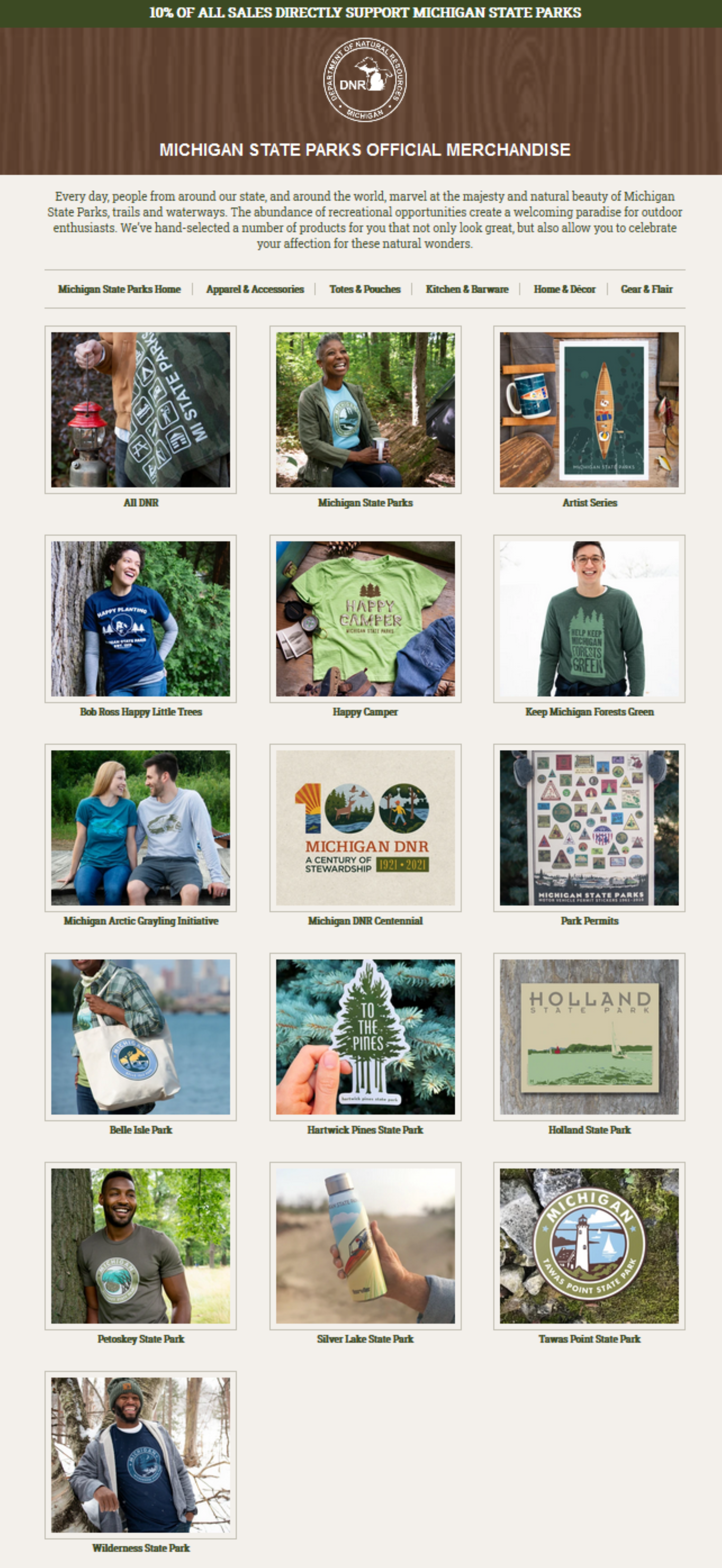8.5: A Great Big Beautiful Tomorrow
- Page ID
- 11080
Sustainability
National and state parks generally indicate in their mission statements that they are charged with protecting natural and cultural resources. Thus, when one considers sustainability in relation to these entities, it is easy to focus primarily on the protection of natural resources. However, sustainability is more than natural resource protection. It also encompasses community and economic components that must be appropriately managed to balance the impacts of resource use. Furthermore, to become central to our way of living and being it must be about active engagement by all stakeholders, not simply passive acceptance of its necessity to our survival.
Sustainability became a popular term during the last two decades, but even park systems that were fierce stewards of the natural environment did not always focus on the breadth of sustainability in their offerings and day to day operations. The NPS produced its first Green Parks Plan in 2012 (revised in 2016) despite being responsible for more built assets than any other federal civilian agency. Its portfolio includes over 67,000 buildings and structures (50 million sq. ft. of spaces such as historic buildings and visitor centers), more than 17,000 miles of trails, over 4 million acres of landscaped areas, and in excess of 3,000 utility systems (NPS, 2020b).
The NPS’ commitment to sustainability is expressed in its Vision: “the NPS will preserve park resources unimpaired for the enjoyment of current and future generations by reducing our environmental impact through sustainable operations, design, decisions, and management at every level of the organization” (NPS, 2016b, p. 4). The Green Parks Plan is the blueprint for achieving this vision and includes goals such as: being water-wise and energy-smart and strengthening sustainability partnerships. The NPS reports progress towards achieving these goals annually in Green Parks Year in Review. For example, the 2015 report indicated that they surpassed the goal of diverting at least 50% of municipal solid waste by 2015 in 2014 with a diversion rate of 68.4% (NPS, 2015).

“NPS Green Parks Goals” by the National Parks Service is licensed under CC BY-NC 4.0.
State and local parks have also incorporated sustainability into their missions and have developed strategies accordingly. For example, Michigan’s state parks system has a green initiative team responsible for spearheading sustainability actions. Their efforts include establishing recycling facilities to visitors at many of their 103 parks; incorporating sustainable design features such as daylighting and natural ventilation in new construction and renovations; and requiring appropriate boat sewage disposal at their marinas. Additionally, they encourage campers to follow Leave No Trace principles and provide them with other tips to reduce their footprint in state parks (Michigan Department of Natural Resources, 2020).
State and local park systems are increasingly using sustainable designs for both trails and buildings. Sustainable trail design is featured in Delaware’s Statewide Comprehensive Outdoor Recreation Plan 2018-2023. The plan recognizes that poor trail design negatively affects the natural environment in the short and long term and proposes that “a sustainable trail balances many elements including location, expected trail use, construction methods, grade changes (grade reversals) and employing quality construction techniques and material” (Delaware State Parks, 2018, p. 77). Designing and building sustainable trails benefit both the natural and cultural environment.
In terms of buildings, many parks are constructing facilities to the standard of the US Green Building Council’s Leadership in Energy and Environmental Design (LEED). The Nature Center (LEED Silver Existing Build) at Placerita Canyon State Park in California was one of the first buildings managed by Los Angeles County to be LEED-certified. Similarly, Discovery Green, a large urban park in Houston, Texas was established with sustainability as a driving principle. Its buildings are LEED Gold certified, 100% of its electricity is generated from renewable resources, it is located so that visitors have access to various public transportation options, and it provides conservation education on-site (Discovery Green Conservancy, n.d.).
Climate change is widely regarded as the earth’s greatest existential threat and is inextricably linked to sustainability. Park systems at all levels are incorporating strategies for combating and mitigating climate change in their planning and management. The NPS established the Climate Friendly Parks Program with goals such as measuring greenhouse gas emissions from parks, educating stakeholders, and demonstrating actions that can be taken to address climate change. Almost twenty-five percent of NPS sites have completed climate action plans (NPS, 2019). The NPS has also established the Sustainable Operations and Climate Change branch in their Park Facility Management Division to ensure that planning for all new construction and renovations factor in climate change. They have also developed comprehensive coastal adaptation strategies such as risk and vulnerability assessments, research and monitoring, and developing educational materials to raise public awareness (NPS, 2016).
California Department of Parks and Recreation’s Cool Parks program is an example of how state park systems are dealing with the threat of climate change. This program outlines the concerns for climate change and provides statewide examples of the natural and cultural resources that are likely to be affected or are already affected by human-induced changes to the climate (e.g. the potential inundation of coastal archaeological sites resulting from sea-level rise). Wildfires will worsen and increase in frequency as the climate warms. Prescribed burning is a strategy California is considering more to reduce the fuel for these wildfires. Additionally, State Parks provide opportunities for increasing public awareness about climate change and adaptation strategies (CDPR, n.d.; CDPR, 2011).
Implementing Accessibility & Universal Design Principles
Universal Design (UD) “is an approach to design that increases the potential for developing a better quality of life for a wide range of individuals. It is a design process that enables and empowers a diverse population by improving human performance, health and wellness, and social participation” (Steinfeld & Maisel, 2012, p. 29). The goal of Universal Design (UD) is to blur boundaries, we have historically used, to distinguish the characteristics of a program, facility, or experience so that anyone who examines it will find it appealing and welcoming. More simply, anyone who perceives the program, facility, or experience will do so as if it was designed intentionally for them, thus promoting a sense of inclusion and ownership.
While UD is rooted in better serving people who experience disability through barrier-free design, it has evolved over considerable time and has expanded to include considerations of every component of the human experience, including initially invisible ability levels like one’s reading level, ability to hear, or a diagnosis of attention-deficit disorder or asthma. For example, if you’ve ever entered a facility and there was limited to no signage directing you, you’ve experienced a lack of UD; imagine how much more unwelcome you’d feel if the only signage was in a language that you could not read. Limited signage is just a tiny example of how UD can impact service provision. Since recreation-based services are offered to meet a particular community’s needs with finite financial resources, UD is particularly important because it also helps to maximize resources by designing opportunities that will serve the most members. With this in mind, UD is becoming more ubiquitous as a design principle across both programs and facilities, and will become increasingly important as more people experience disability due to the aging of the population, and as societies become more diverse in myriad ways. The following examples illustrate how UD is being implemented across the park and recreation spectrum and highlight how the efforts are enhancing guest services, a critical component of hospitality.
Two municipalities showcase an exceptional UD process in the Kansas City region in which they used intensive problem-solving workshops (charrettes) that brought together all interested parties and decision-makers to solve design problems so they could become “communities for all” (Mid-America Regional Council, 2016). From a facility-specific perspective and demonstrating that community recreation is a leader in UD, one of the first facilities to earn a UD certification from the Global Universal Design Commission was the Mary Free Bed YMCA in Grand Rapids, MI in 2016 (Godlewski, 2016); the first pure hospitality facility to earn a similar certification did not do so until 2020 when the Hampton Inn in Amherst-Buffalo, NY earned its certification (Center for Inclusive Design and Universal Access, 2020). Finally, from a product perspective that helps community parks, Little Tikes Commercial has created a UD product called the Quiet Grove, which helps playground users who are sensory-sensitive feel more included (Quiet Grove, 2020).
Diversity, Equity & Inclusion
Issues surrounding diversity, equity and inclusion have plagued the NPS as well as many state and local park systems for some time; in some cases from the establishment of individual parks. For example, Native Americans were the first inhabitants of much of what now constitutes public lands for recreation but were removed to create parks or for other reasons. Buffalo Soldiers who are African Americans, were the NPS’ first rangers but despite that, African Americans were systematically excluded from recreating or working in national parks for over half a century after they first patrolled Yosemite National Park (Finney, 2014). New York City’s famous Central Park was built on land that was formerly Seneca Village, but which was seized from primarily African American landowners through eminent domain. Examples of discrimination, segregation, and other injustices in parks and recreation abound.

“NPS Ranger Shelton Johnson, Yosemite National Park 2019” by Mechelle N. Best is licensed under CC BY-NC 4.0. Ranger Johnson using reenactment to share the history of the Buffalo Soldiers in Yosemite National Park.
For many years, the absence of diversity was also evident in the types of sites that were accorded protection, the history that was celebrated, the types of activities allowed in certain spaces, and the type of interpretation provided to the public. Essentially, Native Americans, African Americans, Latino/as, Chinese, and other non-white communities were erased from the history of and prohibited from enjoying the benefits of public parks. Exclusionary practices also extended to the physically challenged and members of the LGBTQ community.
Parks agencies have dealt with these systemic concerns with varying levels of interest and success. In some instances there has been tacit acknowledgment of racial injustice and other egregious practices; in other cases, more overt acknowledgment has taken place with the requisite apologies for past actions. Good faith efforts to become or to create more welcoming spaces for all people are increasing. This is evidenced through efforts to be culturally respectful and inclusive in interpretation, in providing collateral materials in Braille and languages other than English, in providing resources for deaf and hard of hearing visitors, and in recruiting diverse employees. Marketing of parks is also changing with people across various spectra appearing in print, broadcast, and online promotion to encourage visitation to parks, whether at the local, state or national level. Yet there remains much work to be done in these areas.

“Michigan State Parks Official Merchandise” by Mechelle N. Best is licensed under CC BY-NC 4.0. Promotional images for Michigan State Parks Official Merchandise feature diverse models. Sales webpage for Peninsulas, one of the retail partners in the Michigan Department of Natural Resources’ These Goods are Good for Michigan program.
Embracing International Visitors
Diversity in park visitation is also seen in the number of visitors to the US from around the world. National parks are some of the most popular attractions visited by both domestic and international tourists. In 2019, 33.7% of all international tourists to the US (37.9% of leisure tourists; 22.3% of business tourists) said they had visited a national park or monument. Some city and state parks are also icons that attract visitors from far and wide. Central Park in New York is the property of the New York City Department of Parks and Recreation, yet it is one of the most well-known parks in the world. With some 43 million visits each year (Central Park Conservancy, n.d.), Central Park outpaces even the most popular national recreation spaces. For example, the most visited national park, Great Smoky Mountains National Park saw around 12.5 million visitors in 2019 while the most visited of all NPS managed sites, Golden Gate National Recreation Area had just over 15 million visitors that same year (NPS, 2020). Despite global problems that temporarily affect tourism, forecasts suggest that international arrivals will continue to increase significantly in the mid- to long-term future. This suggests that an increasing number of tourists will visit national, state, and perhaps local parks. Concerns about the exclusionary practices discussed previously are therefore pertinent.
Technology & Service Delivery
In the recreation sector, Pokémon Go was all the rage in 2016 to bridge the gap between devices and interacting with the real world, but the next iteration is the use of augmented reality with smartphones for playground activities (Gault, 2019). For example, Biba is a suite of mobile games intended to get kids back out to playgrounds and engaging in more moderate to vigorous physical activity (Biba, 2020). A pilot study confirmed that kids get more active on playgrounds when using the game in comparison to standard playground play (Patten, Iarocci, & Bojin, 2017). Similarly, Agents of Discovery is a mobile educational gaming platform being used by the City of Santa Clarita and other parks and recreation departments to encourage youth to enjoy outdoor recreation experiences. These types of innovations can be used to better serve the guests of park and recreation organizations and enhance their experiences through using the devices they love. Furthermore, numerous recreation facilities have added features such as “smart” lights (which can also serve as a Wi-Fi hotspot) and “smart” benches that can charge devices through a solar-powered USB, helping encourage and sustain the use of their spaces, facilities, and amenities (Parks and Recreation Trends, 2020). Finally we have the concept of CyberParks, where nature, society, and cyber technologies blend; where technology facilitates and enhances user experience in a park, by providing information about the environment, the history of the place, and as an interface for organizations to better market additional experiences to the user (Smaniotto Costa, 2019).

